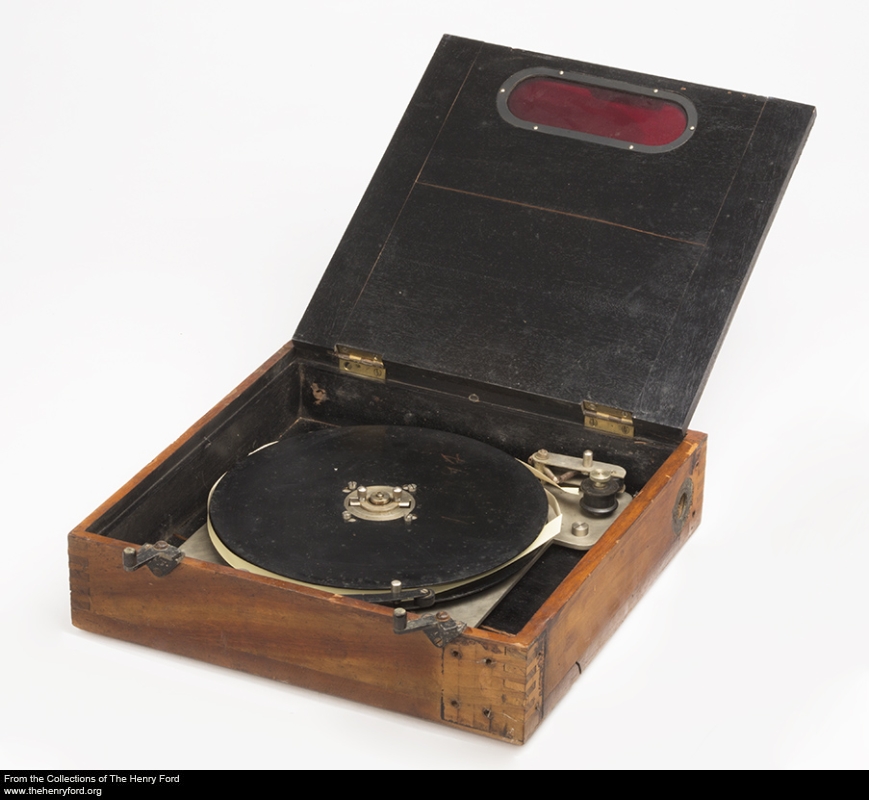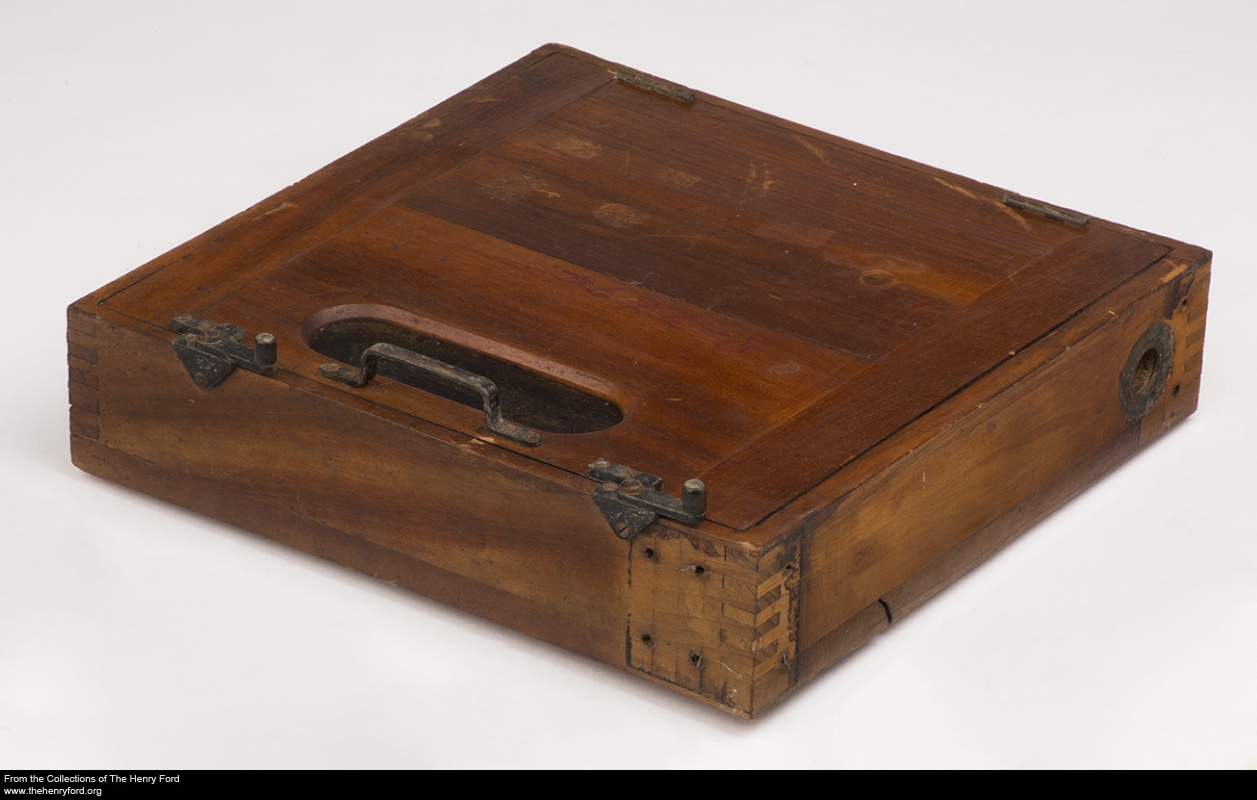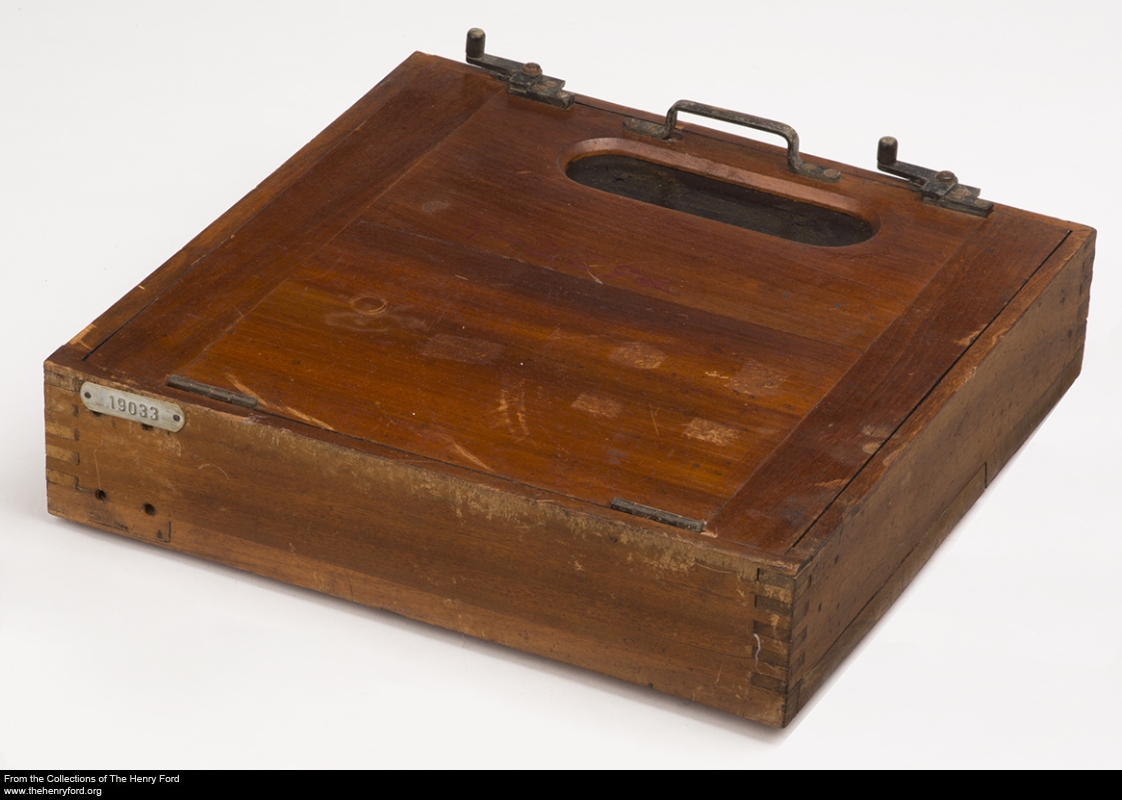Unidentified Found Object (UFO)
- Sierra Eckert
- Kristen Gallerneaux
- Phillip R. Polefrone
- Dennis Yi Tenen
- Grant Wythoff
Our first mission: to identify “Mystery Object 40.9.11” in the collections of the Henry Ford Museum in Detroit. In the summer of 1915, a wireless telegraph station in Sayville, Long Island owned by the German company Telefunken was caught sending covert commands to U-Boats patrolling the Atlantic Ocean. Precisely how the Germans cryptographically hid their communications right under everyone’s noses in the United States—and in turn, above their heads—remains a mystery.
Today, the Henry Ford Museum holds a collection of equipment originating from the “RCA Museum.” These materials were distributed to the The Henry Ford and several other institutions in between 1937-1940. Noteworthy is that the RCA Museum only ever existed on paper—items consequential to the history of technology were gathered by RCA representatives and donated or loaned to established museums. Several objects in the RCA collection were once used in the German-owned Telefunken station in Tuckerton, New Jersey, which was confiscated by the US Navy in 1914, who continued its operation. Additionally, there are several devices owned Charles Apgar, the amateur experimenter who recorded the wireless telegraph signals sent from Sayville on wax phonograph cylinders and turned them over to the American government. These were the first ever recordings of a radio broadcast.
One of the objects in this collection has been referred to internally by the museum’s staff as “Mystery Object 40.9.11,” a light-tight wooden box containing a neon yellow, paper tape reel. When the Museum’s conservation department initially opened the box, the paper tape began fading to a near-white, pale yellow, leading them to believe that the tape was treated with cyanide. Kristen Gallerneaux, Curator of Communication and IT at the Henry Ford Museum, first thought of the cyanotype process. But her search for evidence of cyanotype paper-tape devices in radio and wireless history came up with nothing.
Kristen describes here the curatorial process thus far:
The conservation department conducted in-house tests with samples of the paper reel. They applied heat, light, acids, solvents, and even some kind of ‘smell test’ where they light the material on fire in a glass jar and then sniff the fumes to try and detect certain odors. None came up positive for cyanide. We sometimes work with the Detroit Institute of Art’s Conservation lab, where they have different equipment.
The test revealed bromine as the major element detected with minor to trace levels of barium, strontium, and silver present. The paper support is likely coated with a baryta layer (barium and strontium sulfates), with a light sensitive emulsion (silver bromide in gelatin) above the baryta layer. Bromines in the paper made more sense than the initial thoughts of cyanotype chemicals, as silver bromide processes were another one of those alternative early photo processes that would have been in use in the 1900-1930 range.
I did a little more research, and the lead of bromide solution on paper tape led me to conclude that the object is likely related to high-speed phototelegraphy—possibly recording images of signal data. They potentially operated in conjunction with Telefunken photoelectric receiver cells used at Tuckerton (mfg. by C. Lorenz AG) and a ‘developer’ that came from the same accession. The box is light tight, painted black on the interior with red safety glass. I asked an electrical engineer if there were any minute mechanisms (electrostatic producing, etc) that I wasn’t seeing, and he said it was basically a ‘feeder box’ that would have led out to other components. There are no company markings or patent application numbers on this box.
An employee of Telefunken AG, Dr. Fritz Schroter, did a lot of early work with phototelegraphy using paper and photoelectric cell development; two of his patents, US1818585 and US1937131 are possibly related to the development of this artifact. If the technology that is represented by this group of artifacts was developed in the post-RCA takeover of the station, there are a few known patents that are era-appropriate where they talk about refining bromide processes for recording sound on paper.
We’re currently doing a few more tests on the organic materials present – rubber, wood, and Bakelite – to try and pin it down to a more exact timeframe. So, many overlapping museuological forensic conundrums here, and I’ve had to embrace that [the] “Mystery Objects will continue to remain [a mystery] that much longer. For now, it is a wooden “black box” (literally and metaphorically) that held chemical recording tape, of potentials that never happened.
We are reaching out to the internet for help. Any and all information you may have will be appreciated and clearly attributed in our materials. Thank you!



